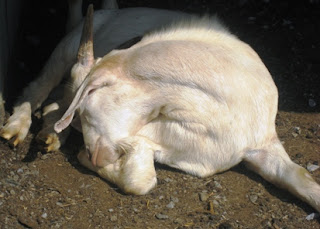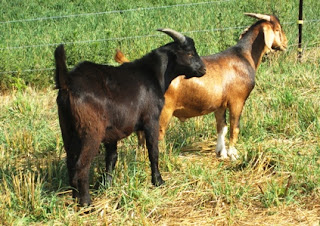A second fecal sample was collected from each goat's rectum. The samples will be sent to Delaware State University for fecal egg count determination (day 28).
FAMACHA© scores declined by one-half of a score, averaging 2.15 compared to 1.66 two weeks ago. Scores ranged from 1 (red) to 3 (pink). However, only one goat was dewormed (with moxidectin).
Goats scoring 1 or 2 on the FAMACHA© scale are usually not dewormed, whereas those scoring 4 or 5 are almost always dewormed. If a goat scores 3, other factors are considered when making the decision whether or not to deworm. These include body condition score, previous FAMACHA© and BCS, FAMACHA© scores of other goats, and the general health and thriftiness of the goat.

Body condition scores improved slightly from 2.78 on June 22 to 2.84. Several goats were treated for infections on their ears, back, or testicle. Two goats were treated with an antibiotic for fever and respiratory symptoms.
 The research center received approximately 0.4 inches of rain yesterday. The rainfall tally for June was only 1.55 inches, compared to 6.48 inches in June 2006. Last year, most of June was dry, but more than four inches of rain fell at the end of the month. Temperatures are still mild, allowing for plentiful grazing.
The research center received approximately 0.4 inches of rain yesterday. The rainfall tally for June was only 1.55 inches, compared to 6.48 inches in June 2006. Last year, most of June was dry, but more than four inches of rain fell at the end of the month. Temperatures are still mild, allowing for plentiful grazing.











